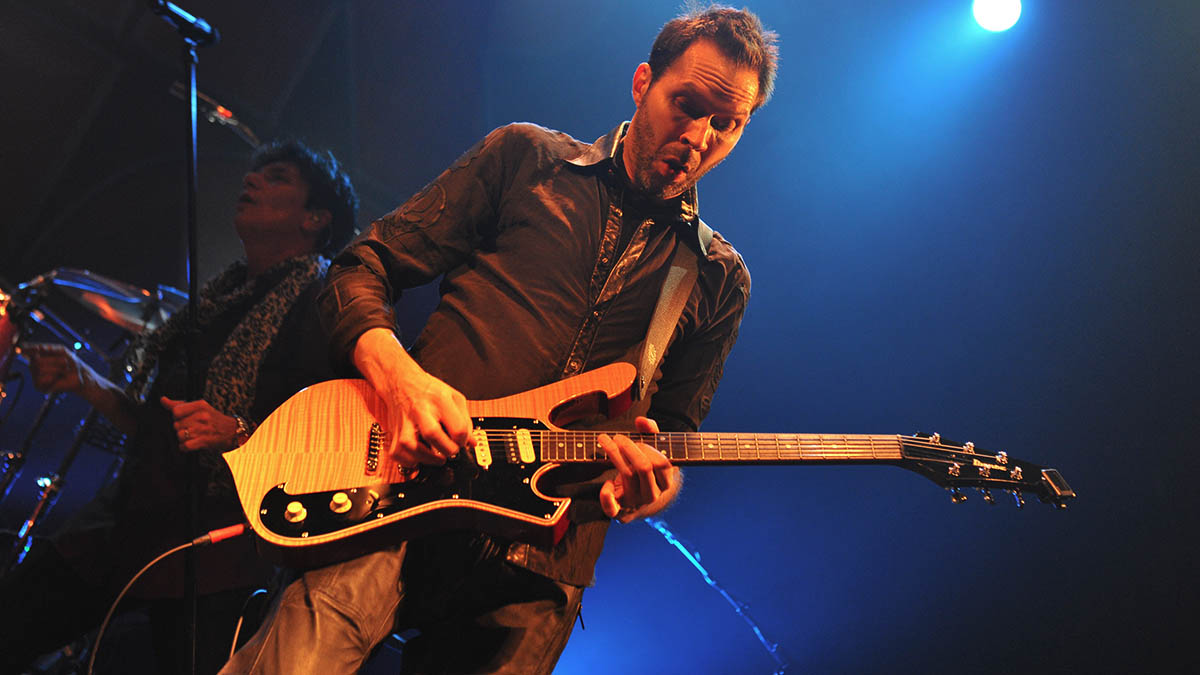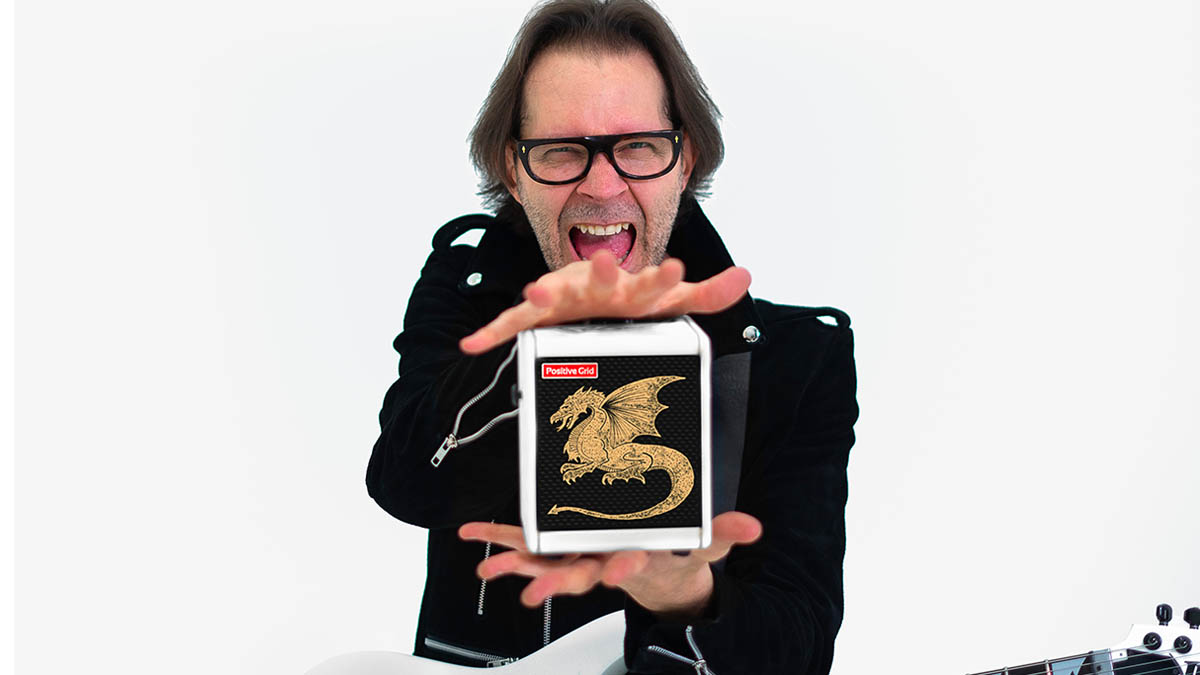“That was what drew me to the guitar in the first place”: Paul Gilbert reminds us to pay attention to vibrato – because it is part of the language of the instrument
The shred pioneer and virtuoso rock player loves vibrato so much he titled an album after it – and in a recent interview he explains why we should use it to develop our own style

Paul Gilbert wrote the book on how we approach the electric guitar to deliver a sense of spectacle, pushing the envelope with Racer X and influencing a generation of shredders even before they heard the a click and whirr of his Makita drill.
But as a player and a guitar teacher, he has never forgotten the fundamentals, and in a recent interview with Positive Grid's YouTube channel to promote his new limited edition Spark MINI practice amp, he spoke of how essential vibrato and string bending is to giving your playing personality.
Once you’ve learned the rudiments of lead guitar, fretboard navigational essentials such as hammer-ons, pull-offs and slides, you’ve got to give it some feel.
“Because it makes the music sound good,” he says. Also, because it’s not an option on some instruments, we should look on it as a gift that we have the capacity to shake or bend the strings to make a lick stand out.
“Different styles of music can emphasis different modes of expression,” he continues. “For example, if you listen to a Bach harpsichord concerto, which I love – I love Bach harpsichord – it doesn’t have vibrato. That’s an instrument where vibrato is not one of the elements. So it’s like a non-issue. We’re not going to have it on a harpsichord. But a guitar does have that, so if you’re gonna do it you might as well do it good.”
Gilbert is such a stickler for vibrato he named his 2012 solo album after it. That no one player quite does it the same – who, for instance, can replicate BB King’s vibrato? or Eddie Van Halen’s? – is part of the appeal, and it’s why Gilbert fell in love with the instrument in the first place.
“Different players have different approaches to it,” he says. “For me, just growing up listening to players who even might have been in the metal category still had a connection to blues and soul that planted that in what I wanted in music as a fan.
Want all the hottest music and gear news, reviews, deals, features and more, direct to your inbox? Sign up here.
“Growing up and hearing Mick Ralphs in Bad Company – ‘Rocksteady! Waaaaaaah!’ – one note that’s just killer and as rock evolved... it wasn’t as much about that, it was about other things. Whether it is because I started to get older or set in my ways it was hard for me to leave that initial love of vibrato and soulfulness; that was what drew me to the guitar in the first place.”

Gilbert has just released an instrumental album in tribute to Ronnie James Dio, the voice who lent Rainbow and Black Sabbath an sense of power and soul, and he spoke of the value in studying great singers and applying their phrasing and melody to the guitar.
“It’s interesting studying singers, too, because some of the licks that a blues guitar player will do are the exact same licks that a blues singer will do and if you learn it on guitar you have a visual picture of it,” he says, noting that when Dio would reference a blues or soul motif in his vocal, it was carrying with it some of the source material that all rock and metal was built upon.
“It probably came from Aretha Franklin, or 50 years before that, but to have that little nugget of soul travel through all these different styles – it is hard for me if that’s not there,” he says. I miss it. It’s sort of like the language of emotion, or of a culture, and for those us in that culture it is necessary. It is part of the language.”
Gilbert might have been sitting down Positive Grid to ostensibly promote his Spark MINI, and to talk about some of the custom presets he programmed for the release.
But any time spent with Gilbert is time well spent; there is plenty of wisdom here, not least on how singers can inform our sense of melody and why the search for perfection can be a fool’s errand. And also how you can get better tone when you are recording ideas from your practice amp to your iPhone [spoiler: position it right next to the speaker].
You can check it out above.
We’ll leave the last word on vibrato to Paul Gilbert, and what he told MusicRadar back in 2016 when he shared his five tips for guitarists.
“Vibrato has to be in tune and have some sort of rhythmic intention to it,” said Gilbert. “Listen to those early Ace Frehley solos: you can almost count the song to his vibrato – each bend is perfectly in tune and perfectly in time.
“I’d say the trick is to have your own vibrato heroes and learn from them! Listen to Brian May, Robin Trower, Eddie Van Halen, Yngwie, Schenker, Blackmore, Hendrix… any of those guys, and plant that sound in your ears. What is it that makes them sound unique? Hold your guitar and just make that thing sing. Most importantly of all, make yourself love it.”
Jonathan Horsley has been writing about guitars and guitar culture since 2005, playing them since 1990, and regularly contributes to MusicRadar, Total Guitar and Guitar World. He uses Jazz III nylon picks, 10s during the week, 9s at the weekend, and shamefully still struggles with rhythm figure one of Van Halen’s Panama.
